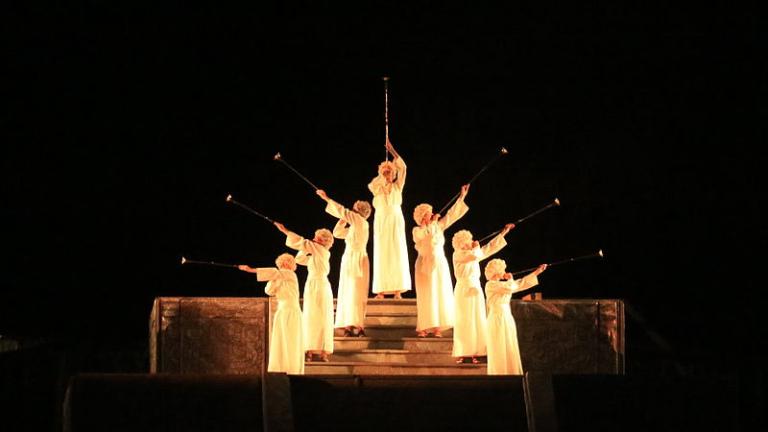
(Wikimedia Commons public domain)
From some notes that I haven’t yet put into print:
With regard to matters of ancient history, and particularly with regard to the New Testament, the scholarly consensus shifts, the arguments are never decisive, and all is uncertainty.
With the Book of Mormon, however, the Lord removes the ambiguity, and makes the options clear.
No dependence upon the sifting of ancient textual variants.
No doubtful reconstruction of long-vanished and very foreign cultures.
It is Yes, or No.
In modern times, amid abundant historical documentation, he gives us
the Book of Mormon;
Which contains the record of a fallen people, and the fulness of the gospel of Jesus Christ to the Gentiles and to the Jews also;
Which was given by inspiration, and is confirmed to others by the ministering of angels, and is declared unto the world by them —
Proving to the world that the holy scriptures are true, and that God does inspire men and call them to his holy work in this age and generation, as well as in generations of old;
Thereby showing that he is the same God yesterday, today, and forever.[1]
No more the question, If then, why not now?
Book of Mormon authors knew in advance that Jesus would come to earth and take upon himself a physical body (and they knew the approximate time of his coming).
Several saw him before his mortal advent.
They knew his name-title, “Jesus Christ.”
They knew the name and the virginity of his mother.
They knew the place of his birth.
They foresaw his baptism, including its location and other specific details of the ministry of John the Baptist.
They knew that he would call twelve apostles to assist in his ministry.
King Benjamin prophesied of his many miracles.
They expected his atoning death by crucifixion, knowing also of the three days of darkness that would intervene before his resurrection.
They understood the sacrifices of the law of Moses as foreshadowing his sacrifice.
The Book of Mormon confirms the authenticity of many of the sayings ascribed to Jesus in the New Testament gospels.
It confirms his pain in the Garden of Gethsemane, and his resurrection on the third day.
It is, thus, a second witness to the essential truth of the New Testament gospels.[2]
The Book of Mormon begins, on its Title Page, by declaring that it comes forth
to the convincing of the Jew and Gentile that Jesus is the Christ, the Eternal God, manifesting himself unto all nations.[3]
The magnificent chiasm of Alma 36 is centered on Christ.
The most important event it records is the appearance of the resurrected Christ in America.
- a) This is impossible unless Christ is divine, and truly resurrected.
- b) Christ reiterates his fundamental New Testament teachings.
- c) He redelivers, and thus confirms the unity of, the Sermon on the Mount.
It concludes with an invitation to “come unto Christ, and be perfected in him.”[4]
It testifies that “there is no other way nor means whereby man can be saved, only through the atoning blood of Jesus Christ.”[5]
But then the question becomes Is the Book of Mormon true?
The remarkable text of the Book of Mormon is itself internal evidence of its truth.
- a) complexity
- b) richness
- c) generations and varied people have found it satisfying
Daniel Spencer, Jr., was a prosperous Massachusetts merchant — “One day, when his son was with him in his study, he suddenly burst into a flood of tears, and exclaimed, ‘My God, the thing is true, and as an honest man I must embrace it; but it will cost me all I have got on earth.’ “[6]
It points to Christ.
Not just a myth, a pretty story, but historical truth.
“Wherefore seeing we also are compassed about with so great a cloud of witnesses, let us lay aside every weight, and the sin which doth so easily beset us, and let us run with patience the race that is set before us.”[7]
President Hinckley told the story of a young Asian military officer from a non-Christian background, who accepted the gospel and was baptized while training in the United States. Then-Elder Hinckley asked him what would happen when he returned home:
“My family will be disappointed. I suppose they will cast me out. They will regard me as dead. As for my future and my career, I assume that all opportunity will be foreclosed against me.” “Are you willing to pay so great a price for the gospel?” Elder Hinckley questioned. Tears rose to the young man’s eyes as he responded, “It’s true, isn’t it?” When Elder Hinckley replied, “Yes, it’s true,” the man concluded, “Then what else matters?”[8]
And what else does matter?
[1] Doctrine and Covenants 20:8-12.
[2] References for the foregoing claims of corroboration are given in Daniel C. Peterson, “Ministry of Jesus Christ,” in Daniel H. Ludlow, ed., Encyclopedia of Mormonism (New York: Macmillan, 1992), 2:730-32.
[3] Book of Mormon, Title Page.
[4] Moroni 10:32.
[5] Helaman 5:9.
[6] Cited by Black, Stories from the Early Saints, 76.
[7] Hebrews 12:1.
[8] Sheri L. Dew, Go Forward with Faith: The Biography of Gordon B. Hinckley (Salt Lake City: Deseret Book, 1996), 364.










